Hands-On Rock Cycle: Crayons & Cookies
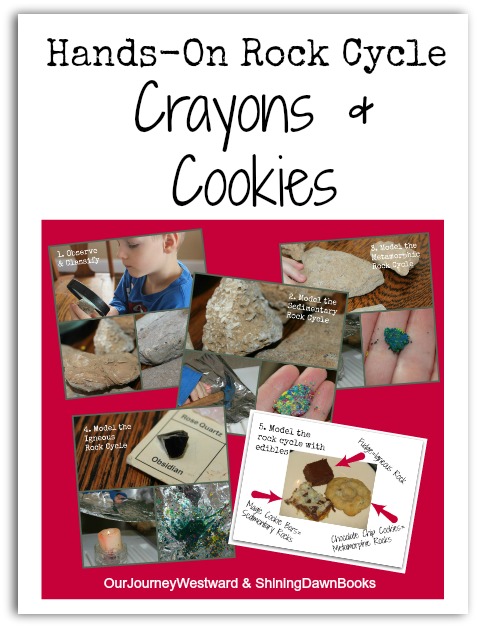
(This post contains affiliate links and links to my business website.)
Rocks: Nature Study Indoors or Out
One of the cool things about studying rocks is that you don’t necessarily have to be outside to do it. Of course, you’ll want to take a rock collecting nature walk at some point, but once you have a nice sampling of rocks, much of the study can be completed indoors. It’s a great option for nature study when the weather is stinky!
The Rock Cycle: Activities
Living things have life cycles, but did you know rocks have rock cycles? That’s interesting considering they will never die, huh? The rock cycle is simply a name for the process in which rocks can be formed. In VERY simple terms you have sedimentary rocks made up of sediment (small rocks, shells, sand, decaying matter, mud) that has been “cemented” together. Then you have metamorphic rocks which are basically sedimentary rocks that have changed under extreme pressure and/or heat. And finally, you have igneous rocks which were once magma (melted rock) from deep in the earth’s surface that has cooled.
The activities below demonstrate the three types of rocks and how they were formed.
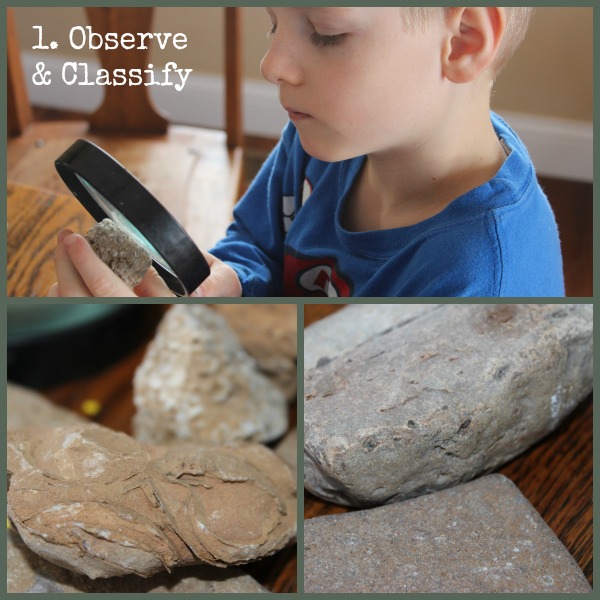
First and foremost, closely observe the rocks in your collection. Look for sediment, minerals, and other easily observable characteristics. Challenge your children to classify the rocks several times based on various characteristics like size, smoothness, color, etc. The final classification should be into three groups: those you think are sedimentary, metamorphic and igneous. (We are able to find sedimentary and metamorphic in my neck of the woods. I had to purchase samples of igneous rocks to observe.)
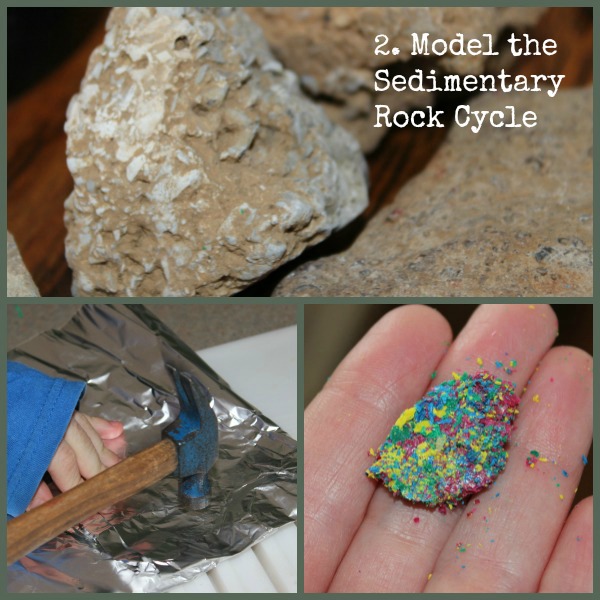
To model the sedimentary rock cycle, simply sandwich crayon shavings in some aluminum foil and hammer until the shavings stick together. Notice how you can still clearly see the individual pieces that make up the “rock.” Also notice how easy it is for pieces of the rock to fall off.
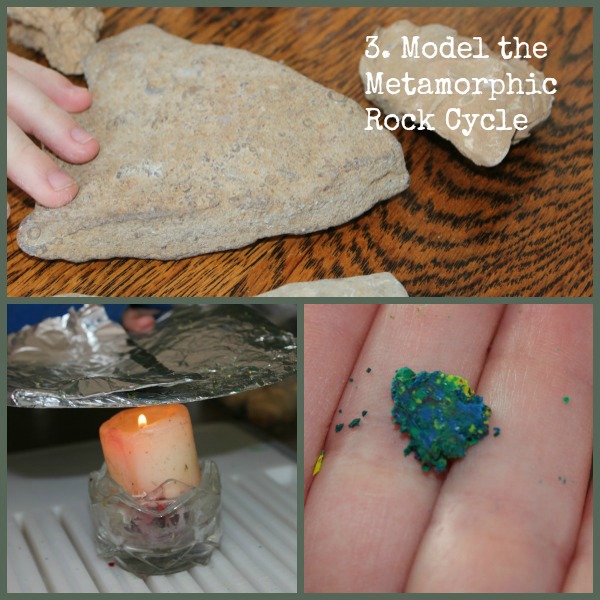
To model the metamorphic rock cycle, hammer the “sedimentary crayon rock” some more and place it over a bit of heat from a candle. Repeat these steps until the colors begin to blend together and become a more solid “rock.” Notice how you can no longer see each individual piece that makes up the rock. They’ve been changed by the heat and pressure.
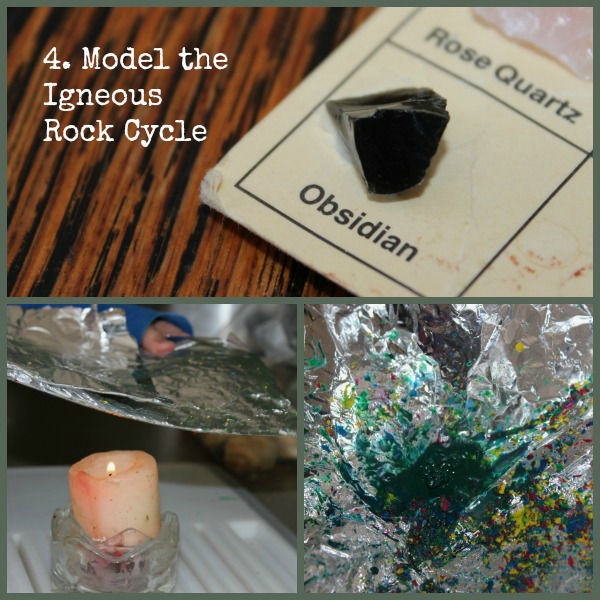
To model the igneous rock cycle, continue heating the “rock” until it melts completely. Allow it to cool and notice that the rock looks 100% different than any of the pieces that originally made up the rock.
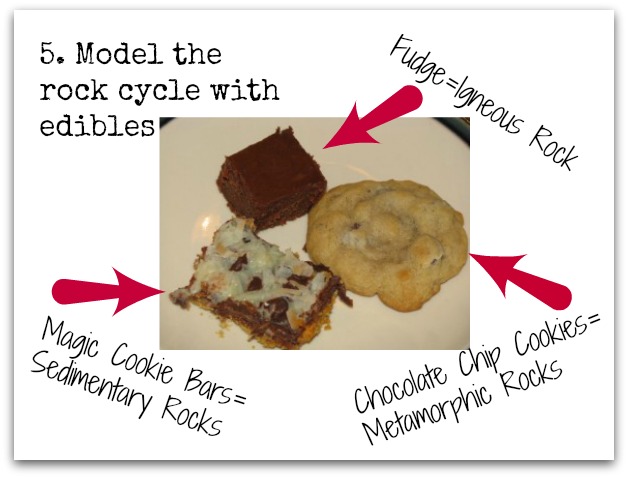
After completing the crayon activities, take it one yummy step further by creating each type of rock in sweet treats. The same principles apply…you can see all the ingredients that make up the “sedimentary rock” (magic cookie bar.) You can see some of the ingredients that make up the “metamorphic rock” (chocolate chip cookie), but many of the ingredients have undergone such a change that they can’t be identified any longer. And, in the “igneous rock” (fudge), all the ingredients have changed via the heat so that you cannot positively identify any of them.
I can’t think of a yummier hands-on rock cycle activity, can you?
The rock cycle is only the tip of the iceberg that can be studied about rocks! In NaturExplorers Hard as a Rock, you could spend a month or more learning about rocks. Or just a few days…your choice. Since they are so versatile, NaturExplorers studies are perfect for any homeschooling style – CM, unit study, delight-directed, literature-based, those who takes weekly nature walks – anyone! If the topic of rocks doesn’t float your boat, there are more than 20 different nature topics to choose from!
More Rock Fun!
This post has been linked to:


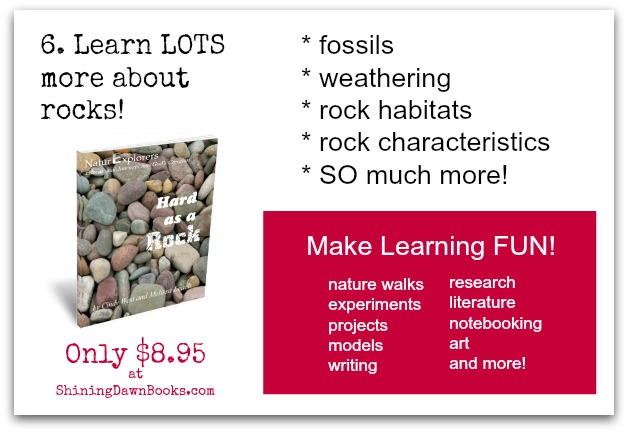
2 Comments